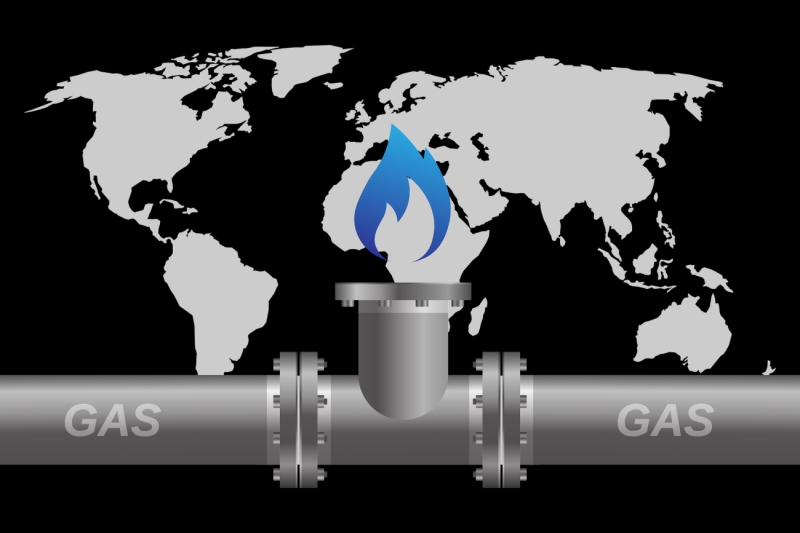
Pixabay
The planet continues to “warm” with natural gas and the COP can clearly do nothing about it. Global consumption of natural gas reached a record high in 2024, according to the International Energy Agency (IEA). In a report published yesterday, Tuesday, January 21, 2025, this branch of the OECD also predicts an increase for the current financial year, driven essentially by “rapid growth in Asian markets”. The IEA's announcement comes the day after the inauguration of US President Donald Trump, who immediately signed executive orders withdrawing his country from the Paris Agreement and declaring a national energy emergency.
A 2.8% increase, or 115 billion cubic meters more natural gas than in 2023. In its document, the International Energy Agency emphasizes this percentage, which is quite high compared to the average growth of 2% observed between 2010 and 2020.
LNG, including Russian, very coveted
Last October, the IEA estimated global gas consumption at 4,200 billion cubic meters for 2024. This hydrocarbon alone represented “around 40% of the increase in global energy demand,” it is further explained.
The explanations put forward by the report are numerous, such as the fact that natural gas “continues to replace oil and petroleum products in various sectors.” Often considered a “transition energy,” less polluting than coal and oil given its lower CO2 emissions, this fuel, the IEA continues, has thus gained ground in long-distance road transport and even in electricity production.
In addition, Asia-Pacific accounted for “nearly 45% of additional gas demand in 2024, thanks to its continued economic expansion”. This, the IEA adds, will lead to a further increase in natural gas consumption in 2025.
For this current year, the organization expects “tight markets”. While the halt in the transit of Russian gas through Ukraine since January 1 “should not constitute an imminent risk to the security of supply of the European Union, it could increase the EU’s need for liquefied natural gas (LNG) imports and restrict market fundamentals this year”, it explains.
Since the start of the war in Ukraine, this gas in liquid form has been increasingly sought after around the world, both in Europe and in Asia. And while natural gas is less polluting, its preparation, transport and regasification are nearly twice as emissive as transport by gas pipeline.
These geopolitical tensions, in Ukraine as in the Middle East, are in any case “weakening” “the global gas balance”, by “continuing to fuel price volatility” while “supply remained tight”.
A rise in 2025, still driven by Asia-Pacific … and Trump ?
Despite an 18% drop in demand, Europe still depends on the United States and Russia, particularly its LNG, whose delivery has increased by 17%. On the Old Continent, Belgium, France and Spain will take the lion's share with 85% of Europe's total LNG imports from Russia in 2024.
Is Donald Trump's return to the White House and his inauguration on Monday, January 20, the other determining factor in the projected increase in consumption of fossil fuels, gas but not only, in 2025 ?
From the first moments of taking office, the American president signed dozens of decrees, including the one that withdraws (once again) the United States from the Paris Agreement” or the one that declares “a state of energy emergency”.
Donald Trump was quick to set the tone. “America will become a manufacturing nation again, and we have something that no other manufacturing nation will ever have: the most oil and gas of any country in the world – and we're going to use it. We're going to use it,” he promised. But analysts say they don't expect the market to boom, since the U.S. oil and gas industry is already firing on all cylinders.
Natural gas isn't the only hydrocarbon fuel to see increased production and consumption, as thermal coal hit an all-time high in 2024. In late October, the Global Coal Exit List database, created by German environmental group Urgewald and produced with 51 partner NGOs, said the global coal-fired power plant fleet is continuing to grow. The global coal production capacity was 1,910 GW in 2015 but was set to reach 2,126 GW by the end of 2024.
You liked the article ? It mobilized our editorial staff, which lives only on your donations.
Information has a cost, especially since competition from subsidized editorial staff requires increased rigor and professionalism.
With your support, France-Soir will continue to offer its articles free of charge because we believe that everyone should have access to free and independent information to form their own opinion.
You are the sine qua non condition for our existence, support us so that France-Soir remains the French media that allows the most legitimate to express themselves.

